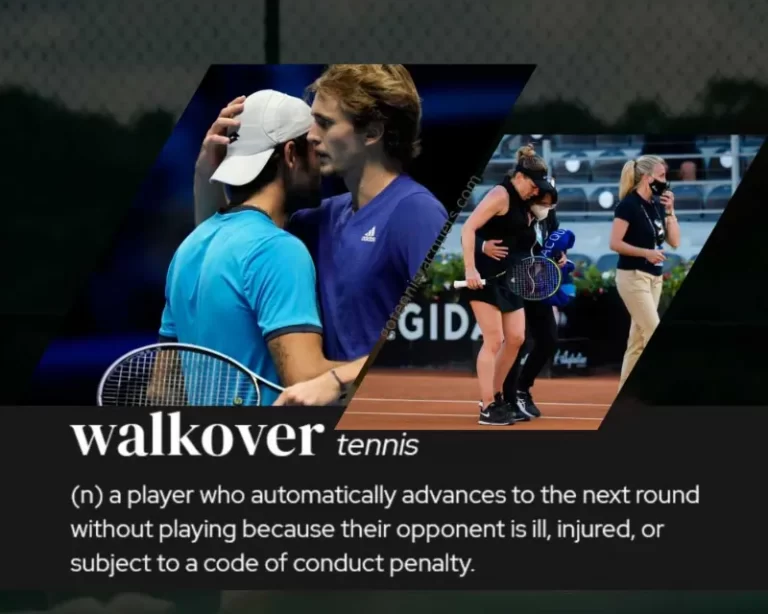How to Hold a Tennis Racquet? Guide for Left-Handed Players


Lefties make up only about 10 percent of the population, but studies have revealed that the left-handed are quite sharp, creative and imaginative. They are more active in sports, especially in tennis most women and men aren’t left-handed.
In the modern age, tennis grips have evolved along with changing equipment. The players are faster and stronger than ever.
The tennis racquets are designed for both righties and lefties. There are special tricks to hold the tennis both for left-handed and right-handed people, otherwise, the players will find a huge difference in strokes.
How do left-handed Tennis Players grip their Racquets?
Understanding how to grip your racquet is one of the fundamentals techniques of tennis. If you don’t know to grip the racquet in the right way, no matter how strong a player you are, it’s hard to compete in a challenging match.
Many websites and detailed notes will describe the basics to hold tennis but mostly focusing on the right hand and believing to reverse the directions for the left-handed.
If you are a left-handed tennis player, there is no need to revert the techniques for right-handed as advancements in technology and engineering have changed the dimensions significantly.
In the 21st century, no need to buy a wooden tennis racquet because there are modern tennis racquets, stylish racquets that are specifically designed for left-handed, or even for both.
As the method of gripping the racquets for the lefties and the righties is considerably different, but you can experiment with both the gripping techniques to find out which playing style suits you the best.
Once you figure out how to locate the grips, then it will be easy for you to adopt both styles. There are many techniques to grip the racquets with the left hand like Forehand, slice forehand, Slice backhand, Serves, Volleys and others.
It depends on the rocket’s shape and structure to choose and apply the technique for the play.
To learn how to form the grip, the tennis player needs a lot of practice. Just hold the racquet with the head perpendicular to the court. Make sure that you are standing in a normal hitting position. After that, assume the racquet is a clock, striking.
Next, you have to hold the racquet forming a V-shape with your thumb and index finger. This time, the position is like a clock striking 11. Do not over-apply the pressure – be relax and hold the racquet with normal force.
If you are thinking to revert the techniques used by right-handed, try the above-mentioned process special for left-handed as this is more appropriate and result-oriented.
Technique to finding the grips
To find out the grips, you will use two critical points of your hand and, of course, your racquet. Those points are located in the palm of your hand.
The base knuckle of your index finger and the heel pad. The next step is to hold your racquet on edge pointing away from you, vertical to the ground. If you see at the lowest point of the butt cap, you will notice that the handle has eight sides, also known as bevels.
The top bevel is called No.1, the next one to the right is called No. 2 and so on. Moving clockwise around the handle. The two points of your hand will be positioned on one of the bevels as per the grip you are using.
Forehand Grips
Forehand grips depend on your play style, you can use Continental, Eastern, Semi-Western, or Western forehand grip. If you play tennis with the left hand and use a continental style, then your two hand reference points will be on the 8th bevel.
This grip is sometimes known as “Chopper grip”. It’s as per the style like you would hold an axe when cutting wood. The Eastern grip is adopted while placing your two points on the 7th bevel.
This grip is mostly taught to beginners because most of the hand is behind the handle for support. When you move your hand counterclockwise to bevel No. 6, you will be adopting Semi- Western grip.
Backhand Grips
We have seen that forehand grips have few backhand grip choices, one-handed or two-handed. The essential one-handed grip is the Eastern backhand grip.
This grip is versatile and allows you to hit flat or hit with spin. If you are an occasional player, then the forehand grip technique is quite enough.
But if you are planning to compete in clubs or a higher level of competitions, it is foremost important to develop a reliable backhand grip technique.
This could be your secret weapon as for the power strokes, the backhand grip is quite important. The main advantage of the backhand grip is both spin and control for a one-handed backhand.
For backhand grip, place your index knuckle and heel pad on bevel 1. This will allow you to hold the racquet in a strong position, and you can freely move the ankle while feeling the level of strokes is quite strengthening.
Serve and Volley Grip
These two are pretty standard and powerful grip techniques for left-handed tennis players. This grip generates a good wrist snap, which will help players naturally pronate and connect with the ball with more force.
This technique is not valid for right-handed, and if you are trying to revert it, then this is a mistake. Maybe a practice of a year can lead to good results.
Moreover, it would help if you focused on the forehand and backhand volley technique as this collectively makes your grip fine, and you will find a difference in your strokes.
Finally, you need to learn these techniques if you want to become a good tennis player. We are thankful to the audience for reading the article and very confident you will find the tips helpful.

As someone who enjoys both playing tennis and writing, I strive to embody a combination of skillful technique and unwavering perseverance on the court while simultaneously offering valuable observations and reflections to my audience through my articles. My overarching objective is to motivate and encourage others on their individual paths towards tennis success.





![Tennis Elbow Symptoms & Treatment [Surgical or Non-Surgical]](https://gotennisracquets.com/wp-content/uploads/2020/12/Tennis-Elbow-Symptoms-Treatment-Surgical-or-Non-Surgical-768x622.jpg)